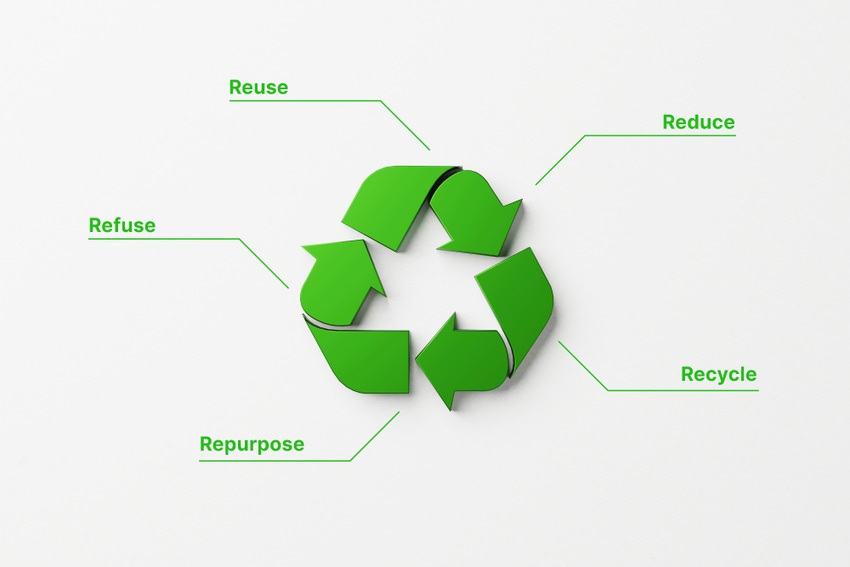A Reality Check on the 5 Rs
For years it’s been the 3 Rs: Reduce, Reuse, Recycle. But recently the 3 have expanded to 5 and, in some cases, even the 7 Rs. It’s like watching the evolution of Marvel movies expand from Iron-Man to Captain America to the Avengers.

For years it’s been the 3 Rs: Reduce, Reuse, Recycle. But recently the 3 have expanded to 5 and, in some cases, even the 7 Rs.
It’s like watching the evolution of Marvel movies expand from Iron-Man to Captain America to the Avengers. With now well over 25 superheroes in Marvel’s cinematic universe and with literally thousands of characters to tap into from decades of comic books, there appears to be no end in sight. It seems the same thing is happening to the “Rs”. To keep it simple, let’s just focus on the 5 Rs which seem to be receiving increased traction. Generally, the 5 Rs can be defined as follows:
REFUSE: Refuse to use/purchase items that create waste in the first place.
REDUCE: Reduce consumption or the generation of waste from items that are consumed.
REUSE: Reuse items to the extent practical.
REPURPOSE: Find new ways to use items so they do not wind up as waste.
RECYCLE: Recycle materials so they can be used again in a similar or different form.
This expansion begs the question: what’s the intended impact from the circularity and sustainability perspective? Overall, the 5 Rs provide a person with perspective on how their habits can influence the amount of waste they create and how they can take specific actions to make these actions more sustainable. In that respect, it’s notable to point out that the 5 Rs are essentially a recipe intended to modify individual behavior. A critical point of understanding is that following the 5 Rs likely necessitates multiple and substantial changes to one’s lifestyle in order to comply.
People who’ve needed to change a habit (e.g. nail-biting, unhealthy snacking, smoking, etc.) will attest that it’s difficult, which is why a significant portion of the population can be resistant to such change, particularly when it involves modifying multiple habits at the same time. In this respect, getting a large segment of the population to commit to significant change can be extremely challenging.
Also, the 5 Rs aren’t wholly applicable or even possible for every item one may purchase or for all materials that could become waste. This means there’s an element of practicality in the interpretation of the 5 Rs that suggests they will only take us so far as a society. This, coupled with the difficulty in implementing a habit change, makes widespread implementation of the 5 Rs more aspiration than reality if the primary goal is changing individual behavior. There has been work done by the Recycling Partnership, researchers at Pennsylvania State University, as well as others that highlights simplicity in messaging. Using only 1 – 3 key points is most effective because it can be more easily remembered. Therefore, increasing the number of “Rs” may actually result in a decrease in change over time simply because only the most motivated people will dedicate the longer action list to memory.
Of the 5 Rs, only the REUSE and RECYCLE elements have substantial, widespread infrastructure. For example, nearly every town has a thrift or secondhand store to receive materials that can be sold for re-use. Nearly every town with a population greater than 20,000 people is served by at least 1 recycling facility, and a large fraction of the population has access to curbside recycling, making it far more convenient to recycle. The rest of the Rs are currently decentralized and rely on substantial effort by the individual that exceed what many people are willing to do. This means the other Rs (REFUSE, REDUCE, REPURPOSE) are left to individual decision making, which goes back to the incredibly difficult goal of changing habits.
Some of the largest changes that will advance circularity and sustainability relate to decisions that product manufacturers make. If you think about it, the ability for a large number of people to adhere to the 5 Rs could be much easier if product manufacturers make consumable items (in particular the packaging) that are, at the very least, designed to be easily reused, repurposed, recycled, or composted. However, in many cases the recyclability and compostability of discarded products and packaging remains overstated, reflecting an ongoing disconnect between the reality of what can actually be done with discarded materials at end of life and what we wish could be done.
Ultimately, with increasing environmental awareness and education, one would expect to see improvements and change, but a systemic change like this will likely take decades. Rather, if product designers can truly consider end of life capabilities and if waste management facilities continue to implement improvements, like AI-driven sorting at MRFs, it is possible to substantially increase the pace of change. This trifecta of improved product/packaging design, technological advancement at end of life, and increased consumer awareness/education are the critical pieces of the puzzle to advance circularity and improve sustainability. The Avengers didn’t beat Thanos one at a time. All the players worked in tandem. Implementing the Rs will require the same unified approach.
About the Author(s)
You May Also Like




